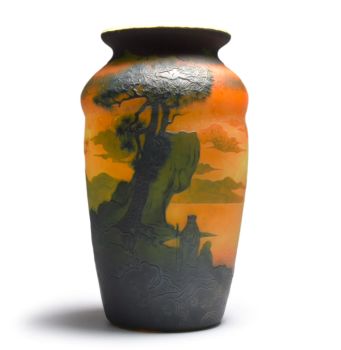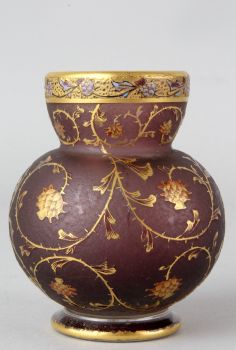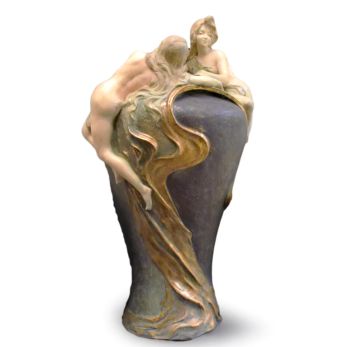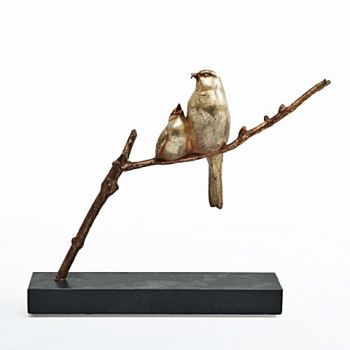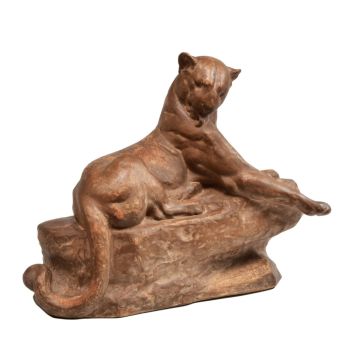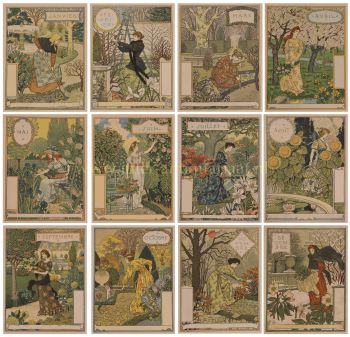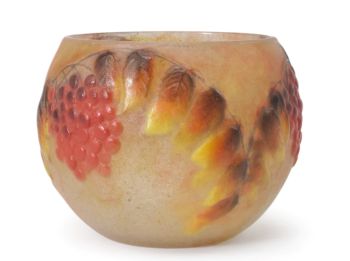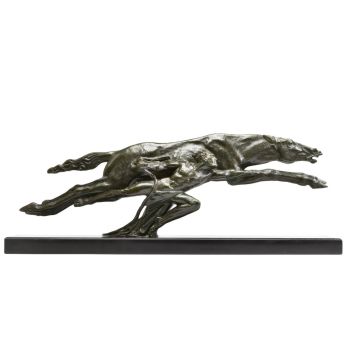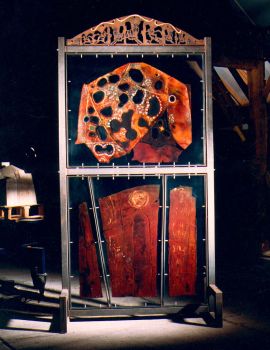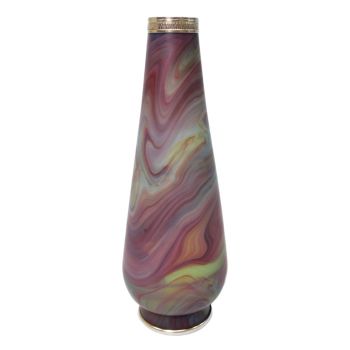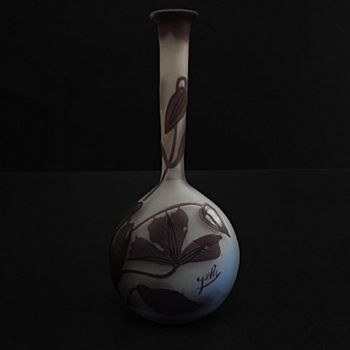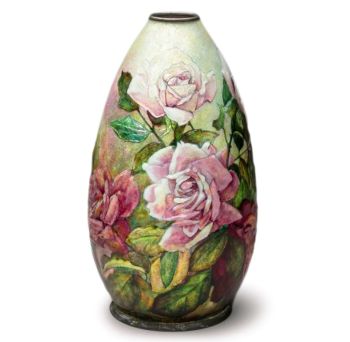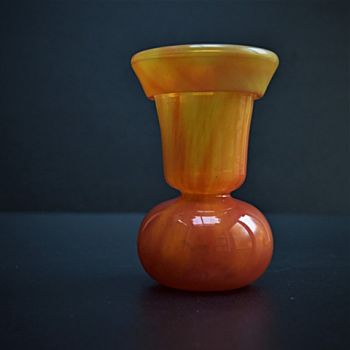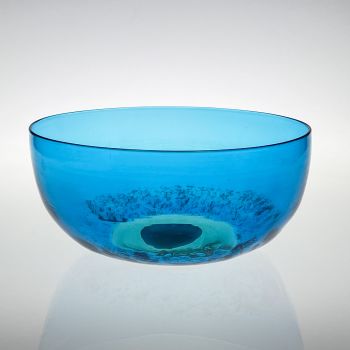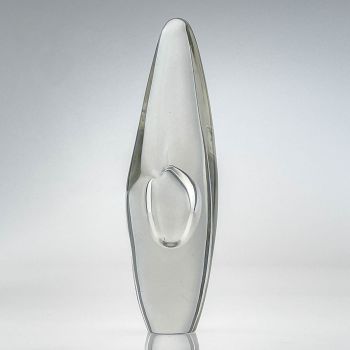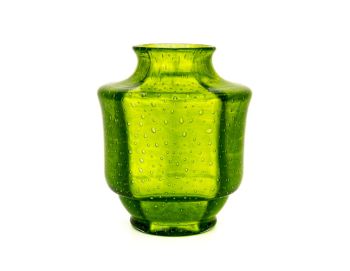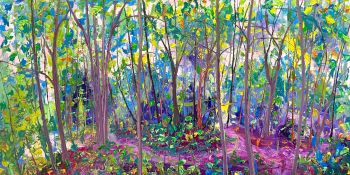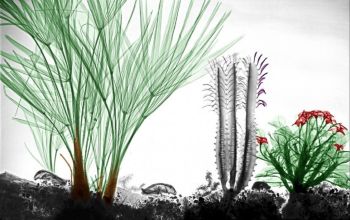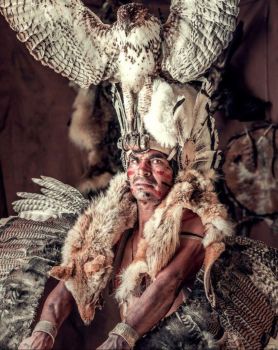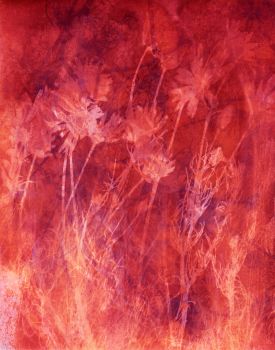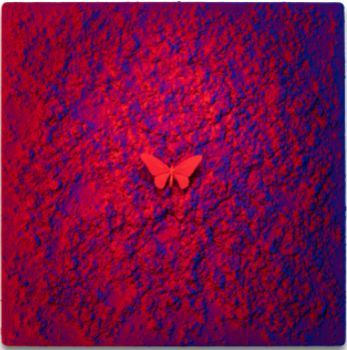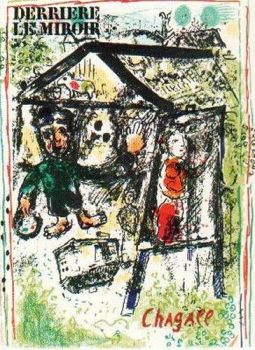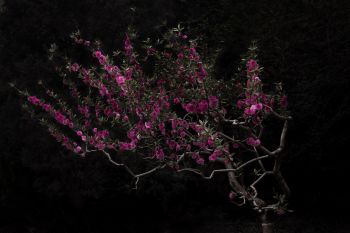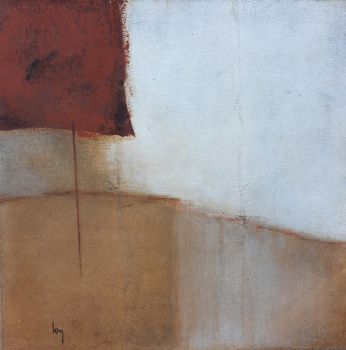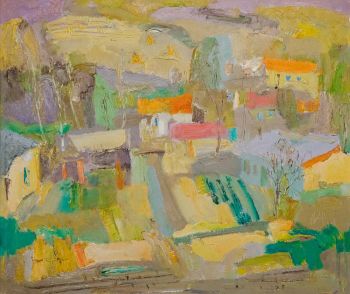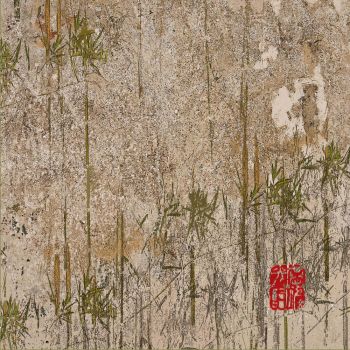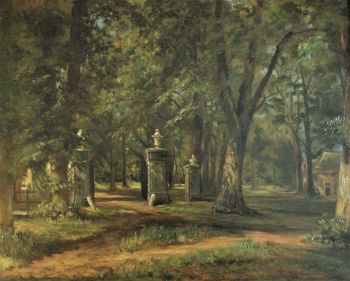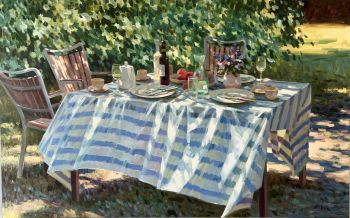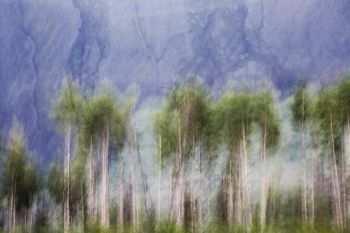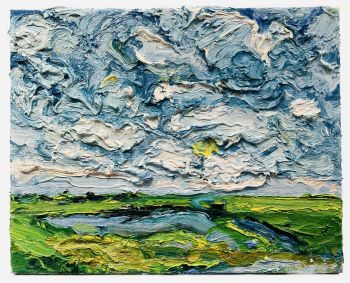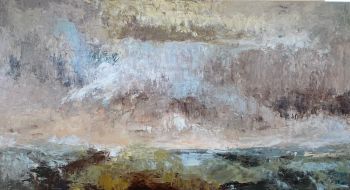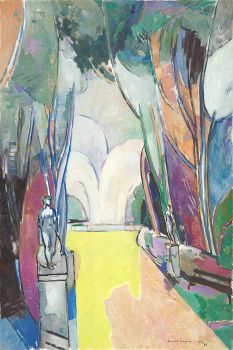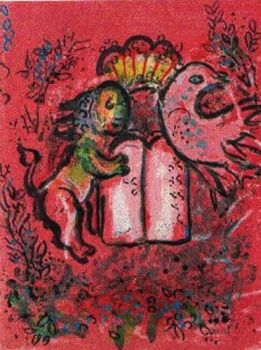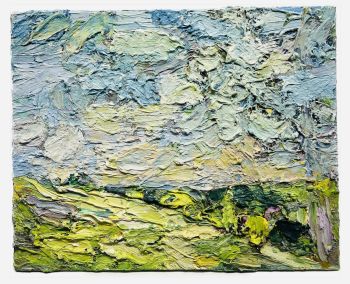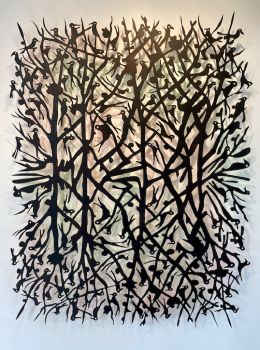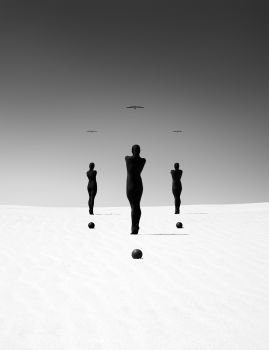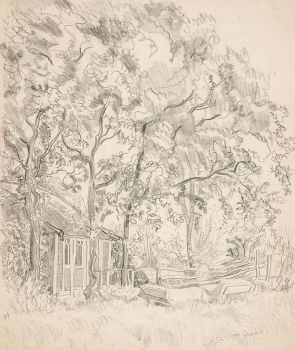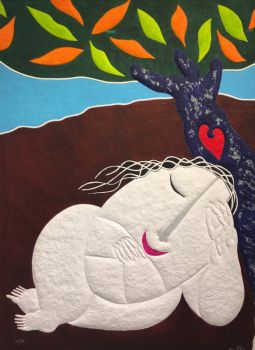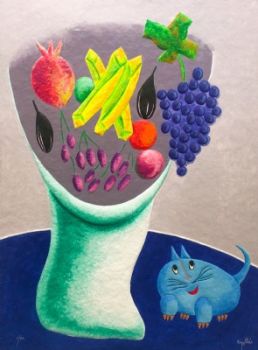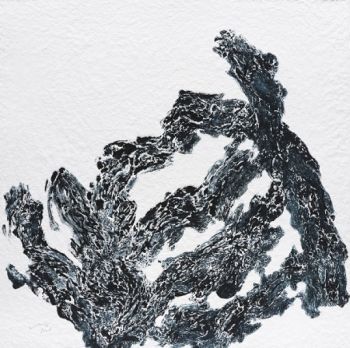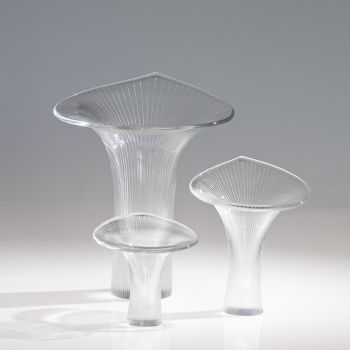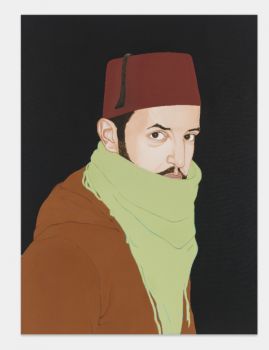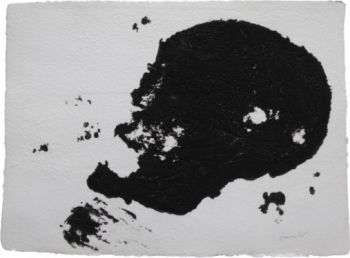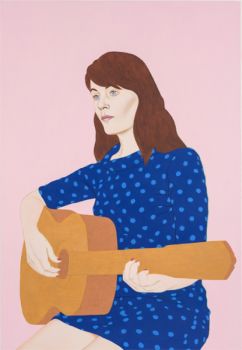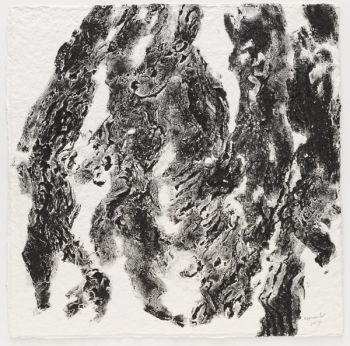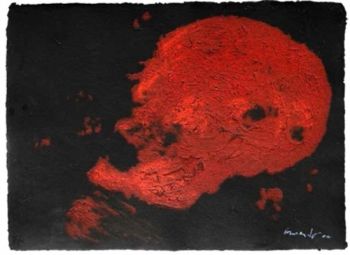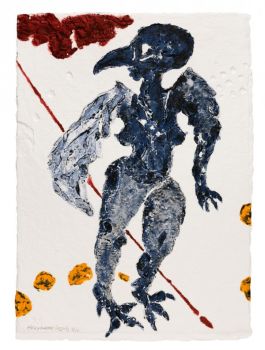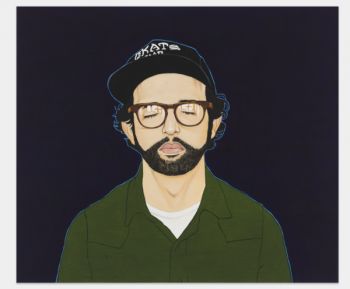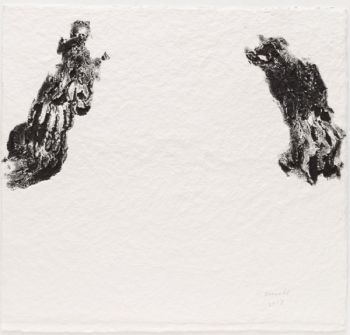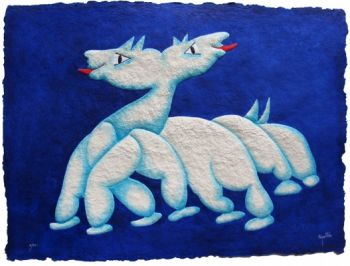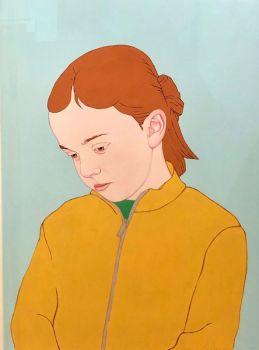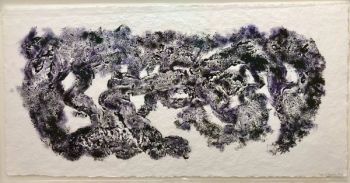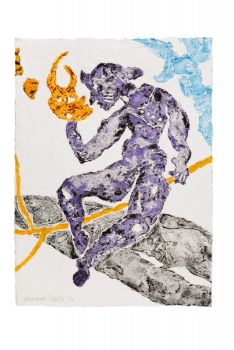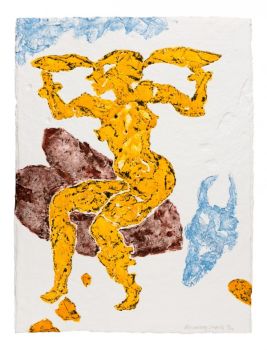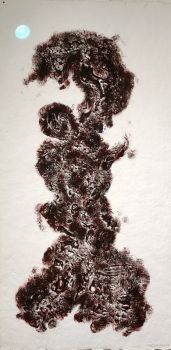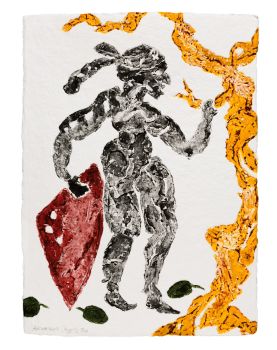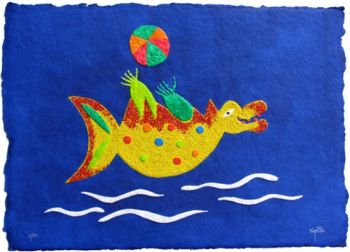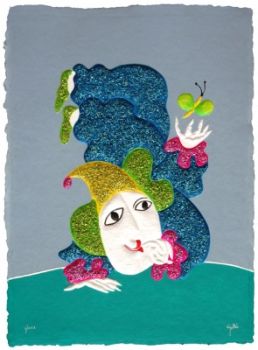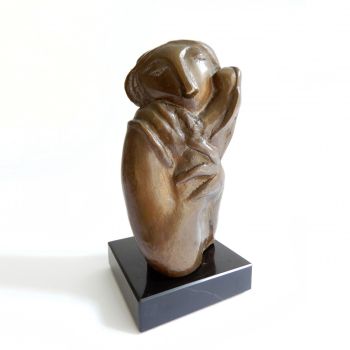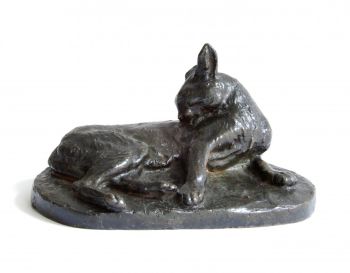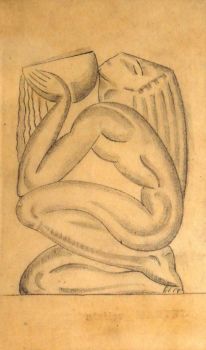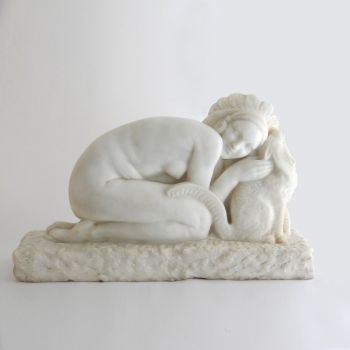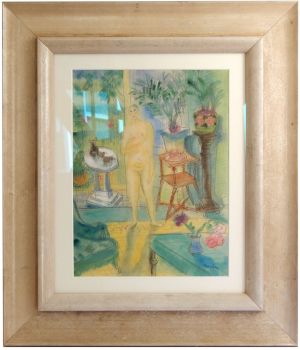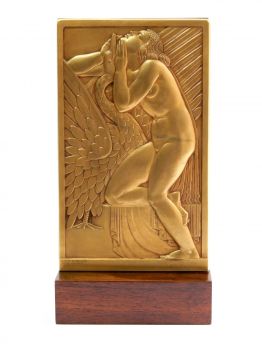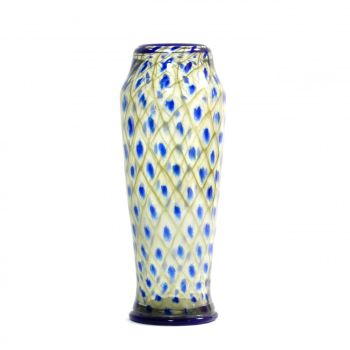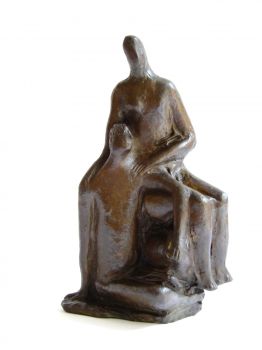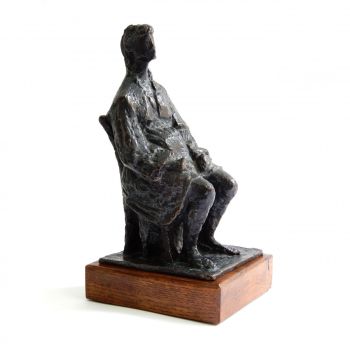Oval vase with a blossom branch 1875 - 1880
François Eugène Rousseau
Stampaincisione
16 cm
ConditionNear mint
Prezzo su richiesta
Dille Art
- A proposito di opere d'arteRare vase by the French designer and creator François Eugène Rousseau (Paris, 1827-1891).
The vase has a very refined decoration inspired by Japanese art, a blossom branch of the quince with a butterfly.
The branch itself is cut in intaglio, the blossom and the butterfly are engraved and partly coloured.
The vase is oval in shape and made of smoky clear glass and double-layered (cased), at the top edge an application of blue glass has been warmly applied to the vase, giving the edge a dripping effect.
The quality of the vase is particularly high. From the middle of the 19th century, Rousseau was very much inspired by Japanese art, which, by opening Japan to foreigners, was just making its appearance in France.
The vase is signed on the bottom with "E. Rousseau Paris".
Biography:
François Eugène Rousseau (Paris, 1827-1891), his father owned a porcelain and ceramics shop on Rue Coqulliere in Paris. Rousseau went to work in his father's shop and also worked at the Manufacture de Sèvres, where he collaborated with several artists. In 1850 he took over the business from his father and also remained associated with the Manufacture de Sèvres. He was very interested in the introduction of Japanese art after the opening of Japan to foreign countries. He immersed himself in it more and decided to design a Japanese tableware with decorations by the painter/etcher Felix Bracquemond (1833-1914). The tableware was also exhibited at the Paris World's Fair of 1867, where it was a great success.
At the same time, he also set up a studio where he experimented with glass and glass decoration. Technically he was completely incompetent and he let his glass made by the brothers Adrien and Léon Appert in Clichy.
Rousseau has many ideas for special designs and decorations. The brothers like to carry it out, Rousseau takes care of the decorations himself, although he does have an assistant Eugène Michel who mainly does the engravings and intaglios.
Rousseau was inventive and original in his designs. His designs were often based on his interest in nature and Japan. Sometimes the shapes of his vases were very austere but applications were applied to them, sometimes his vases were completely free of shape and asymmetrical. He was one of the first French artists to experiment with cased, double-layered glass. He also made crackled glass which he filled in various colours and covered with clear, often coloured glass, creating special effects. Sometimes his glass seemed to be made of gemstone. But he also made double-layered smoky or clear glass vases with an engraved decor or with deeply carved decorations (intaglio technique) that were sometimes (partly) coloured or enamelled, often decorated with applications such as the vase above with a blue dripping effect, ears and/or masks in relief.
His vases were actually only made for special exhibitions, so in 1869 he sold two painted vases to the Albert & Victoria Museum. He also received many positive reactions to the Exposition de l'Union Centrale des Beaux-Arts appliqués à l'Industrie in 1874.
During this period, Ernest-Baptiste Léveillé also became his assistant and the glass cutter Alphonse-Georges Reyen also came to work for him. In 1885 he sold his business to Ernest Baptiste Léveillé, who continued to make the designs of his teacher and friend until 1890. The vases are signed from 1885-1890 with "E. Léveillé and E. Rousseau. After that Léveillé increasingly goes his own way.
François Eugène Rousseau died in 1891. Together with Emile Gallé, he is seen as the forerunner of modern glass art of this time.
Rousseau's vases are very rare and were only produced in small quantities for the major exhibitions, especially those in Paris. They were often purchased by the various museums that bought them for their permanent collections.
Literature:
- Philippe Olland; 'Dictionnaire des Maîtres Verriers de l'Art Nouveau á l'Art Déco Marques & signatures, p. 269-272, Éditions Faton 2016.
- Victor Arwas, 'Glass, Art Nouveau to Art Deco', p. 267-269, Academy Editions London, 1987.
Condition:
Good, the vase is in mint condition, no chips or polishing what so ever, just some colours of the coloured patina in the engraving are faded or washed away because of age and cleaning. - A proposito di opere artista
François Eugène Rousseau (Parigi, 1827-1891), suo padre possedeva un negozio di porcellane e ceramiche in Rue Coqulliere a Parigi. Rousseau andò a lavorare nella bottega del padre e lavorò anche alla Manufacture de Sèvres, dove collaborò con diversi artisti. Nel 1850 rilevò l'attività da suo padre e rimase anche associato alla Manifattura di Sèvres.
Era molto interessato all'introduzione dell'arte giapponese dopo l'apertura del Giappone all'estero. Vi si immerse maggiormente e decise di disegnare un servizio da tavola giapponese con decorazioni del pittore/incisore Felix Bracquemond (1833-1914). Le stoviglie furono esposte anche all'Esposizione Universale di Parigi del 1867, dove ebbe un grande successo.
Allo stesso tempo, ha anche aperto uno studio dove ha sperimentato il vetro e la decorazione del vetro. Tecnicamente era del tutto incompetente e fece produrre il suo bicchiere dai fratelli Adrien e Léon Appert a Clichy.
Rousseau ha molte idee per disegni e decorazioni speciali. Ai fratelli piace realizzarlo, Rousseau si occupa personalmente delle decorazioni, anche se ha un assistente Eugène Michel che si occupa principalmente delle incisioni e degli intagli.
Rousseau era inventivo e originale nei suoi progetti. I suoi progetti erano spesso basati sul suo interesse per la natura e il Giappone. A volte le forme dei suoi vasi erano molto austere ma ad esse venivano applicate applicazioni, a volte i suoi vasi erano completamente privi di forma e asimmetrici. È stato uno dei primi artisti francesi a sperimentare con il vetro incassato a doppio strato.
Realizzò anche vetri screpolati che riempì di vari colori e ricoprì con vetri trasparenti, spesso colorati, creando effetti speciali. A volte il suo bicchiere sembrava fatto di pietre preziose. Ma realizzò anche vasi in vetro fumè o trasparente a doppio strato con decoro inciso o con decori profondamente intagliati (tecnica ad intaglio) talvolta (in parte) colorati o smaltati, spesso decorati con applicazioni come il vaso sovrastante con effetto gocciolante blu, orecchie e/o mascherine in rilievo.
I suoi vasi in realtà erano realizzati solo per mostre speciali, quindi nel 1869 vendette due vasi dipinti all'Albert & Victoria Museum. Ricevette anche molte reazioni positive all'Exposition de l'Union Centrale des Beaux-Arts appliqués à l'Industrie nel 1874.
Durante questo periodo, anche Ernest-Baptiste Léveillé divenne suo assistente e venne a lavorare per lui anche il tagliavetro Alphonse-Georges Reyen. Nel 1885 vendette la sua attività a Ernest Baptiste Léveillé, che continuò a realizzare i disegni del suo maestro e amico fino al 1890. I vasi sono firmati dal 1885 al 1890 con "E. Léveillé e E. Rousseau. Successivamente Léveillé va sempre più per conto proprio modo.
François Eugène Rousseau morì nel 1891. Insieme a Emile Gallé, è considerato il precursore della moderna arte del vetro di questo periodo.
I vasi di Rousseau sono molto rari e sono stati prodotti solo in piccole quantità per le grandi mostre, soprattutto quelle di Parigi. Spesso venivano acquistati dai vari musei che li acquistavano per le loro collezioni permanenti.
Sei interessato ad acquistare questa opera d'arte?
Artwork details
Related artworks
- 1 - 4 / 24
Johann Loetz (Lötz) Witwe Klostermühle
Johann Loetz Witwe - Flamarion Titania bowl – Franz Hofstätter1900 - 1910
Prezzo su richiestaAntiques Emporium
Frères Daum
Daum Nancy – “Paysage Soleil Couchant” vase with two applied handles1900 - 1910
Prezzo su richiestaAntiques Emporium
1 - 4 / 24- 1 - 4 / 24
- 1 - 4 / 24
- 1 - 4 / 12






